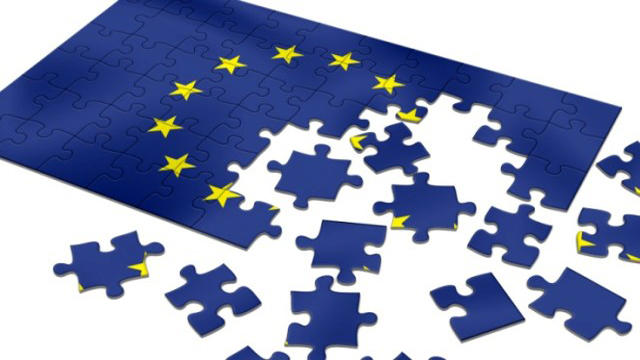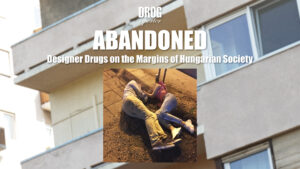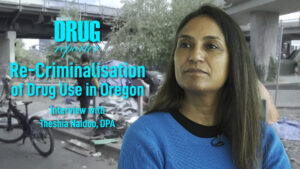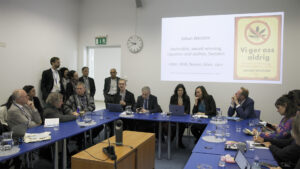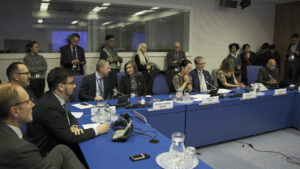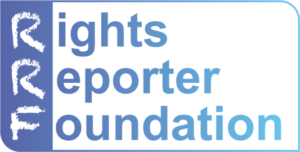Although it was without much fanfare that the European Commission, in July 2017, published the new Action Plan on Drugs (2017-2020), the drug policy community should celebrate it as a great achievement both for its progressive content and for the meaningful involvement of civil society in its preparation. [There is a Polish, Estonian, Hungarian and Serbian translation of this article!]
If there is a sign that the European Union is getting through difficult times, it’s the limited attention its new public policy initiatives receive. While the adoption of previous EU drug strategies and action plans has been well covered by the media, now, two years after the great migration crisis and one year after the Brexit vote, almost nobody noticed the adoption of the new EU Action Plan on Drugs. There was no press conference or press release. It seems drug policy is not a priority for decision makers these days – there are other topics occupying public attention. It’s a shame, because this is the most progressive drug policy document the EU has ever adopted. It is most needed, at a time when European drug markets have been undergoing cataclysmic changes, with the emergence of new drugs and new risks which require new responses and interventions.
The three-year Action Plan translates the goals of the seven-year EU Drug Strategy (2013-20) into concrete actions with clear responsibilities and performance indicators. This is the second action plan relating to the current drug strategy, the previous one (2013-16) having been evaluated by external evaluators, RAND and EY in 2016. The evaluation report, which also included civil society views, highlighted some very significant shortcomings of EU drug policies. It pointed out that among the five pillars of the EU drug strategy, demand and harm reduction significantly lags behind in terms of progress made in the period of the previous Action Plan. According to the evaluation, “there is room for improvement in implementation and access to risk and harm reduction measures across various Member States and… stakeholders from civil society expressed concerns about the extent and quality of these measures.“ Interviewed by the evaluators, these civil society representatives reported scaling down and closure of harm reduction programs, increasing rates of hepatitis C and HIV infections and high rates of overdose deaths among injecting drug users in some member states. Harm reduction should be expanded beyond injecting drug users, including drug checking and other safer nightlife initiatives. The report also emphasised that discussion about new cannabis policies, within and outside of the European Union, is missing at the European level.
The new Action Plan has been prepared with the involvement of the Commission’s expert group, the Civil Society Forum on Drugs. This diverse group of more than 40 NGOs represents various fields, perspectives and ideological approaches. As one of the Core Group members of the Forum, I had the pleasure of coordinating civil society responses to the evaluation of the old Action Plan and the preparation of the new. It has been the first time in the history of the European Union that civil society has been systematically and meaningfully involved in this process, with a significant impact on the final document.
These are a few highlights of the fields where civil society could have a significant impact:
HARM REDUCTION

Unlike the previous AP, this document lays great emphasis on scaling-up access to harm reduction programs – and not only the mainstream programs, such as opiate substitution and needle and syringe programs, but novel interventions such as naloxone distribution, drug consumption rooms, and drug checking are also mentioned. This is the first time that the EU has officially recognised these innovative programs. Another impact of the involvement of civil society can be seen in the list of performance indicators. These indicators were often vague in previous documents, but are much clearer now, for example by adopting indicators from the WHO’s technical guidelines, recommending the distribution of at least 200 sterile needles per injecting drug user per year. These indicators make governments more accountable.
GENDER, AGE AND OTHER FACTORS

The lack of gender- and age-specific services is a huge barrier to access to any kind of treatment or harm reduction programs in the EU. In many, mostly Western-European, member states, there is an increasingly ageing population of drug users who need other kinds of social and health support than those aimed at young people. Underage kids also need different services than adult people. Specific services for women and LGBTQ comunities are equally missing from many member states. Prisoners and asylum seekers often don’t have access to even the basic services which are widely available in the community. This AP addresses this problem and aims to close this gap. At least partly. There are still no specific interventions targeting LGBTQ people in the age of chemsex for example.
HUMAN RIGHTS

To integrate international human rights standards into drug policies has been a civil society demand for a long time. Last year’s UN report on the human rights impact of drug policies was a big success for civil society advocacy. Now our demands have also been met by the EU – this AP aims to create and implement tailored human rights guidelines and impact assessment tools for policy makers. This gives civil society an incredibly important opportunity to address system-wide incoherence when it comes to repressive law enforcement, criminally underfunded services and the human rights of people who use drugs.
CIVIL SOCIETY INVOLVEMENT

Although in most member states civil society plays a key role in implementing drug policies by providing services, there is a great diversity in how the same organisations are involved in policy formulation and evaluation. Only a few member states have formal mechanisms for civil society involvement. Objective 9 of the new AP requires not only the involvement of the Civil Society Forum on Drugs in the formulation, implementation, monitoring and evaluation of drug policies at the European level, but also the involvement of civil society in policy making at a national level. The AP also mentions that civil society should be involved in the preparations for the upcoming UN high level meeting on drugs, to be held in Vienna in 2019. The CSF has created a working group to facilitate this process. What is still missing from the AP, despite our recommendations, is a reference to the need to involve people who use drugs in decision-making. Shame.
TACKLING PSYCHIATRIC DISORDERS

Members of the Forum from several member states reported a gap in tackling psychiatric co-morbidites, also known as dual diagnosis, among people with drug dependence. The number of people suffering from this problem is increasing, but member states are not creating specific treatment resources to meet needs. We therefore welcome the Commission’s inclusion, under action 2.6, of the promotion of comprehensive community care, creating specialised resources to ensure continuity in treatment for these users.
QUALITY STANDARDS

The CSF has a thematic working group on quality standards, which produced a paper highlighting the challenges and gaps in implementing these services. It recommended the introduction of clear indicators to measure the implementation of quality standards for demand reduction. Action 3.10 require member states to involve civil society in the implementation of these quality standards. Although the AP does not mention it, the CSF is in the opinion that standards should be implemented and monitored with the meaningful involvement of service clients.
ALTERNATIVES TO COERCIVE SANCTIONS

While civil society almost unanimously supports it, there is unfortunately no consensus among member states about the decriminalisation of drug use. However, the AP requires member states to apply alternatives to coercive sanctions. The CSF recommends to member states that alternatives to coercive sanctions should include, where appropriate, a Restorative Justice approach, recognised to reduce reoffending and increase the satisfaction of victims. Moreover, alternatives to prison should be correctly evaluated in order to avoid a “net-widening” effect – that is, punishing more actions and persons than before. These measures should be gender-specific, and should ensure that prison is used as a last resort and punitive measures are not used for the simple use or possession of drugs per se. We therefore welcome the inclusion of “increasing monitoring and evaluations” as indicators within action 5.22.
EVALUATING ALTERNATIVE POLICIES

The external evaluators of the previous Action Plan on Drugs pointed out that “the omission of a discussion on recent trends in cannabis policy was noted by a wide range of stakeholders and represented one of the most frequent items raised when exploring whether there are any issues not covered by the Strategy.” We recommended that the Commission provide a comprehensive analysis of developments relating to cannabis policy models (eg. cannabis social clubs in Spain) and their impacts, as we originally requested. The final text of the AP is not as progressive as we had hoped: it only asks the EMCDDA to provide an update about cannabis laws in the EU. Upcoming EU presidencies need to create platforms and organise forums to enable civil society, the scientific community, and decision-makers to discuss alternative policies and their impact.
Is this document a breakthrough in European drug policy reform? No. I believe we can expect the real breakthroughs to happen at national and local level. But it is clearly a step in the right direction. What is really concerning is the lack of political commitment and adequate funding to implement the action plan. The weakness of EU action plans is that the Commission itself has no significant drug policy budget; it is therefore up to the member states to provide funding for most interventions. And several member states are far from committed to scaling-up services – not even committed to continue funding existing services. What we have seen in recent years is programs being curtailed or shut down, especially in the Eastern part of the EU. It is our role to remind EU institutions and member states that broken promises do not only undermine trust in democratic institutions, but also endanger the health and well-being of future generations.
Peter Sarosi
